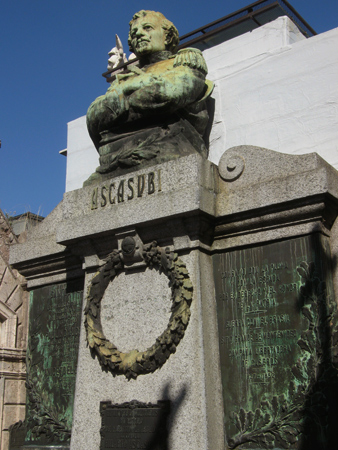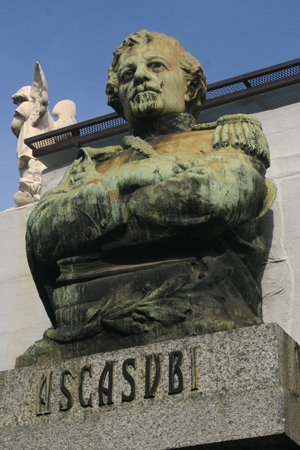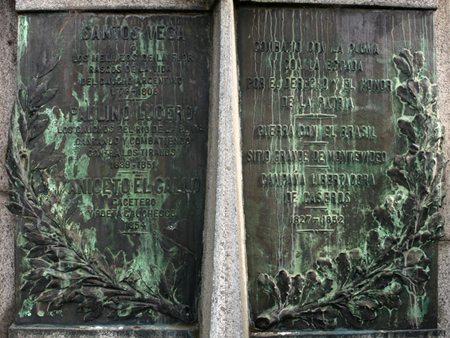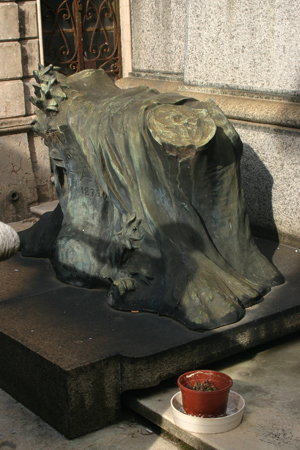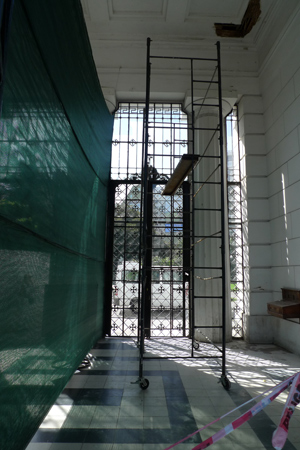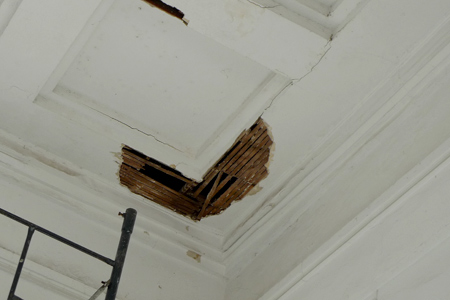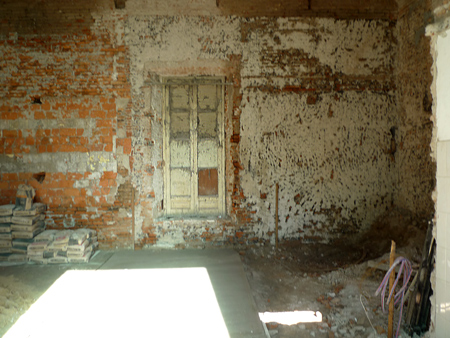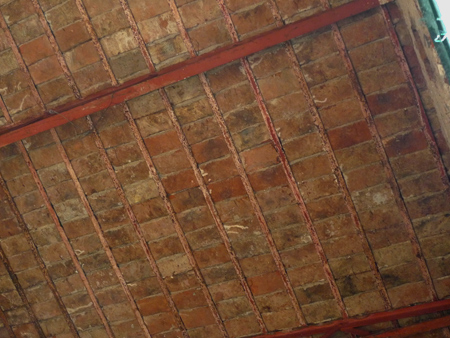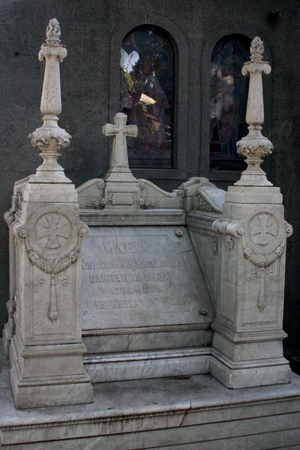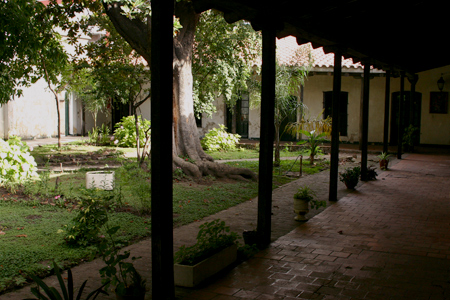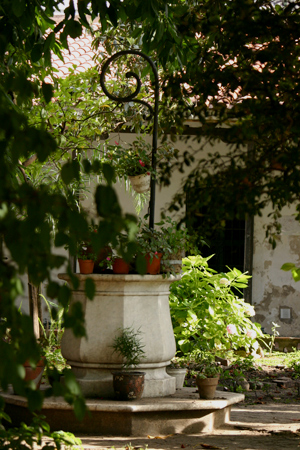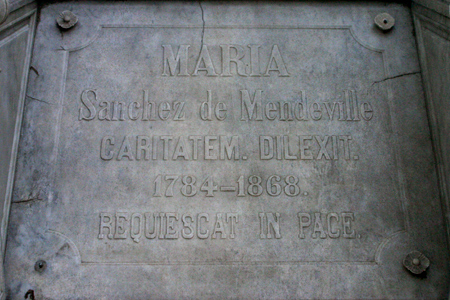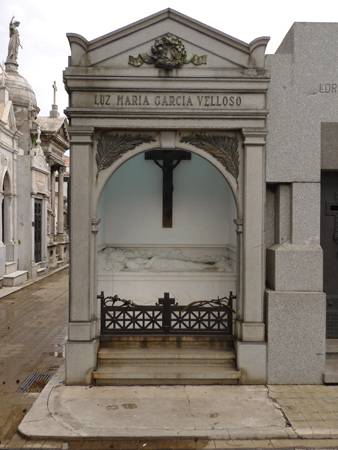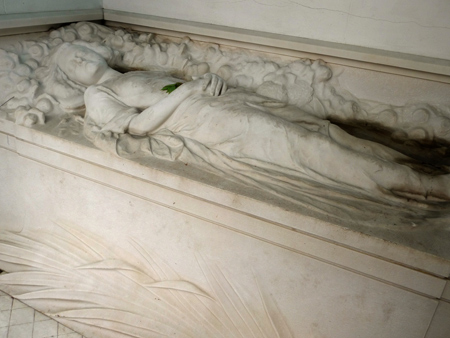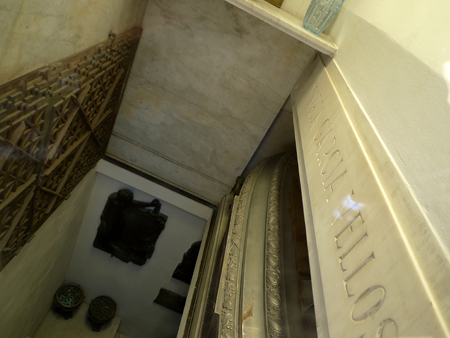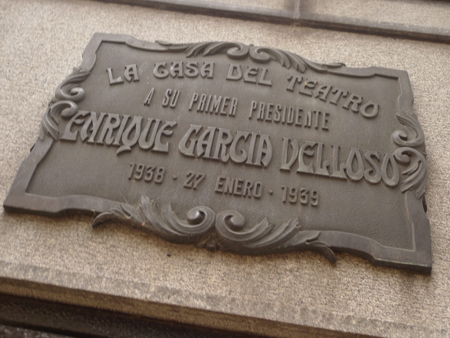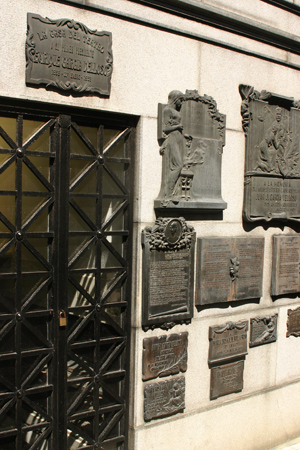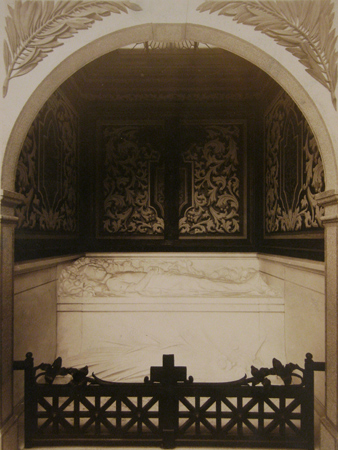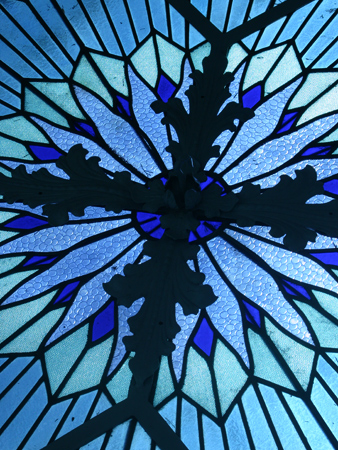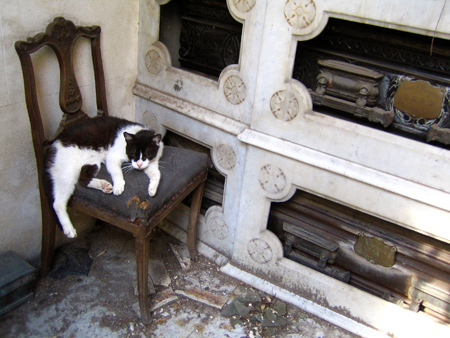
One of the most common —& perhaps surprising— sites at Recoleta Cemetery is the large number of cats that wander around, relax in the sunshine & allow visitors to pet them. In the early morning or around 17:00, women with bags can be seen surrounded by cats who they call by name. These women form part of a volunteer group that feeds the cats, spays or neuters them, & whenever necessary takes them to a local veterinarian.
One woman from Recoleta neighborhood coordinates all cat care & does not want her identity revealed “because I am a well-known person.” She says that for the past 12 years she has done this so “the cats are provided for, & above all, so that there are no rats in the cemetery.” The food is prepared in her home & consists of rice with liver or heart, among other preparations. In addition, once per month all cats are inoculated with an anti-flea injection & given any other veterinary care they may need.
There are around 40 cats at present, & it is prohibited to take one home. “The police will stop you,” she says.
She affirms that all this care “comes out of our own pockets”… although she would be happy to receive donations. See the alert box below for more details.
The last thing we asked about was why she does this. The answer was very simple: “for love of the cats.”
As mentioned, the cat caretakers value their privacy. If any reader would like to make a donation, please leave a comment in this post, & we can put you in contact with the volunteers.
6 Comments